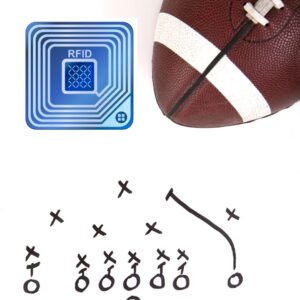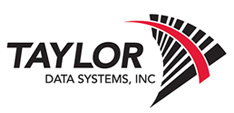BLOG
From Tracking NFL Players to Tracking Production and Inventory with RFID
 As the National Football League kicks off another season, there will be a technology at the center of all the action that also plays a big role in many of today’s top manufacturing plants and warehouses.
As the National Football League kicks off another season, there will be a technology at the center of all the action that also plays a big role in many of today’s top manufacturing plants and warehouses.
Fans, players and coaches will only see the end product of that technology, in the form of real-time data, stats, and measurement of player performances. But if you’ve followed NFL coverage in recent years and seen some of the amazing analysis that experts and coaches can do, right down to measuring player acceleration, speed, and on-field distances and angles, then you’ve already seen this technology in action.
Behind the scenes, it all happens with radio frequency identification, or RFID, a wireless technology that uses tiny tags and radio waves to identify individual players and track their locations and high-speed data in real time, monitoring their every move to within 6 inches.
With RFID, players are tagged with small, ultra-wideband radio frequency tags with tiny micro transmitters that continuously send out signals. Those signals are picked up by ultra-wideband RFID readers that are constantly listening for signals from the tags.
Each tag has a unique identifier tied to an individual player, so the player’s real-time location and movement data can be instantly received, processed, analyzed and visualized with software.
At the software level, algorithms aggregate player stats and data, and they display them in real time. Coaches can then use this data during the game and in practice to measure and monitor player data and better understand where players are performing well and where they need to improve. Sometimes they even use RFID data to change their gameplans and adjust to what’s happening during the course of a contest.
Showing and sharing this real-time data with players, coaches, and staff, they’re able to help players and teams get better in ways that were never possible before.
Television broadcasters and commentators also make use of the same data to break down plays and replays, take fans deeper into what’s happening on the field, and reveal unprecedented insights into an NFL game with on-screen graphics and statistics.
But RFID isn’t just a technology for tracking athletes. In fact, RFID was originally developed for enterprise and industrial applications where the ability to tag, track, and locate assets in real time has revolutionized manufacturing, warehousing and logistics.
How RFID is Used in Manufacturing and Warehousing
Pioneered by data capture leaders such as Zebra Technologies, RFID is now widely used around the world by forward-thinking companies looking for a crucial edge in automation, efficiency, and visibility into their operations, inventory, people and assets.
For example, RFID is commonly used in the world’s busiest warehouses, where the ability to identify, locate and track inventory without manual barcode scanning and paper-based processes has generated massive improvements in inventory accuracy, cycle counts times, and fulfillment speed and accuracy. In fact, with RFID, you can identify and count an entire pallet’s worth of inventory in seconds, and you can conduct a full inventory of an entire room in just minutes, with accuracy of up to 99% or better.
In manufacturing, RFID is used to track materials, components, inventory and assets from receiving and put-away all the way through picking, production, packing and shipping. It can easily be used to confirm that the right parts or products are at the right stages, at the right time, to ensure replenishment, keep lines running, and get the right finished goods out the door.
But RFID also has many applications in quality assurance, including the ability to tag, track and quarantine parts or finished goods when quality issues arise or inspections are needed. And RFID can also be used to tag, locate and track equipment and assets, helping maintenance keep accurate records and keep everything in optimal working condition, and helping production managers and staff find and get the right equipment into place wherever and whenever it’s needed.
How and Why RFID Works So Well Compared to Traditional Barcoding
The key to it all is the wireless nature of RFID technology. Since there is no barcode to scan and no need to have line-of-sight to a barcode or line up a laser to scan a barcode, any tagged item can be identified, located and tracked remotely to within inches, even if it’s not immediately visible to the naked eye.
You also have two options for reading RFID tags: a handheld reader or a fixed reader. A handheld reader is basically an industrial mobile computer that can also read RFID tags. A worker can use it to run all your mobile business apps as well as scan RFID tags and/or barcodes.
Fixed RFID readers are typically placed in strategic locations such as doorways, docks, warehouse aisles, or certain areas of the plant floor, to automatically read RFID tags as tagged items pass by the reader. This removes human labor from the process entirely, and readers work together with RFID antennas as well as your apps and network to transmit and update asset data automatically.
The resulting data is captured and transmitted over your network or to an RFID-enabled app, where its status and location are automatically updated, and users can add or modify other data related to that asset.
There are also different types of RFID tags and radio frequencies you can use, depending on the RFID read range you need and the type of assets you’re tracking. Active RFID tags are tags with their own power source, so they can periodically or continuously send out signals for true, real-time tracking. Passive RFID tags don’t power up on their own. They rely on RFID readers to send them signals that provide energy to “wake up” the tags and allow them to send a signal.
There are also specialized tags to ensure that RFID signals and data are transmitted despite the presence of liquids or a high amount of metals that can otherwise interfere with wireless radio signals.
Some good examples of handheld RFID readers and scanners include Zebra’s MC33300 RFID Series Mobile Computers, which are combination industrial mobile computers and RFID/barcode readers with both a touch screen and a physical keypad to enable seamless and more efficient mobile workflows.
For less industrial applications, Zebra also produces a DS9808-R general purpose 1D/2D barcode scanner and RFID reader, which can be used as both a handheld and hands-free device, and it’s great for retail applications.
Zebra also produces a complete portfolio of fixed RFID readers, antennas, and infrastructure to suit many different environments and applications, so you can build a system that works for your exact needs.
To print RFID tags, Zebra has a complete line of ZT Series Industrial Desktop Printers, including models for both barcode label and RFID printing.
The specifics of your hardware, tags, and readers will depend on how you might be using RFID, but it’s easy enough to explore the possibilities and learn more about whether RFID might make sense for your business by connecting with the right experts.
At Taylor Data Systems, we’ve been partners with Zebra in RFID for over 10 years, and our technology experts can provide a complete overview of RFID technology and help you evaluate whether it’s worth a closer look for your needs.
Contact us now to schedule a call, and we’d be happy to lend our expertise and provide a complimentary consultation and recommendations.






